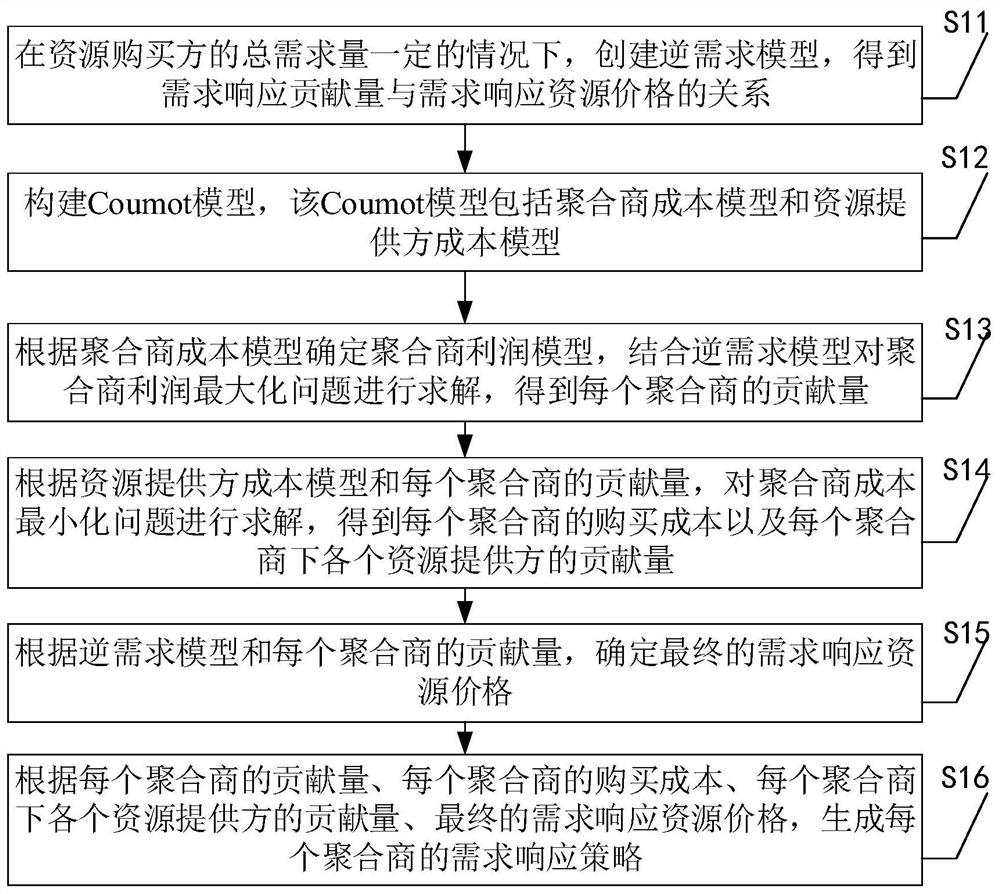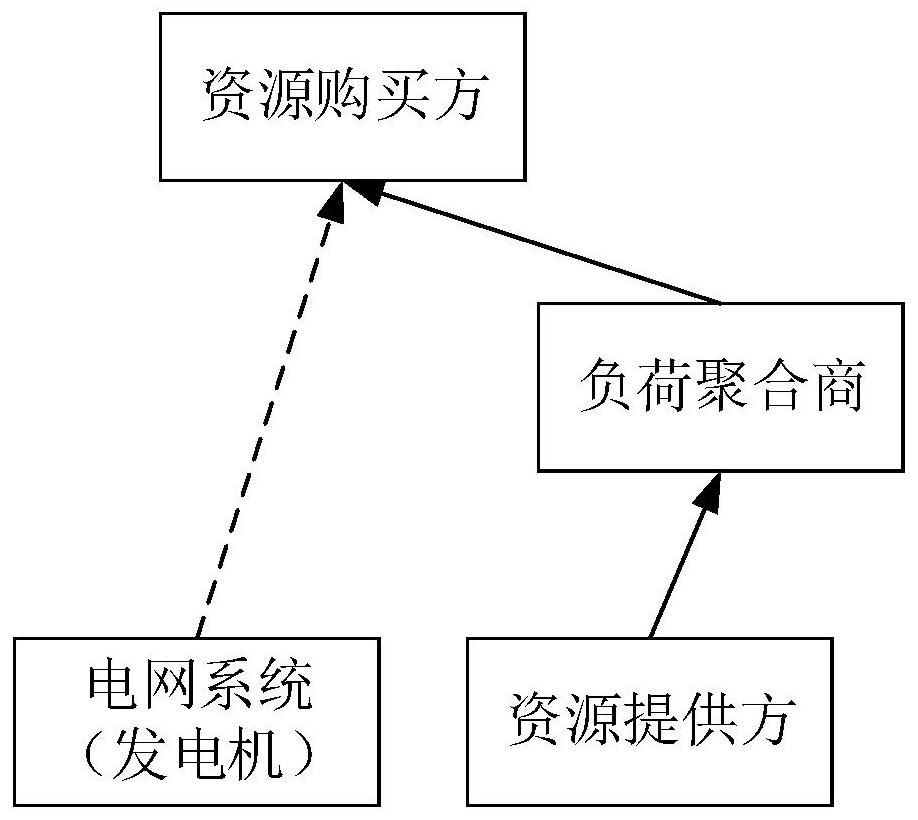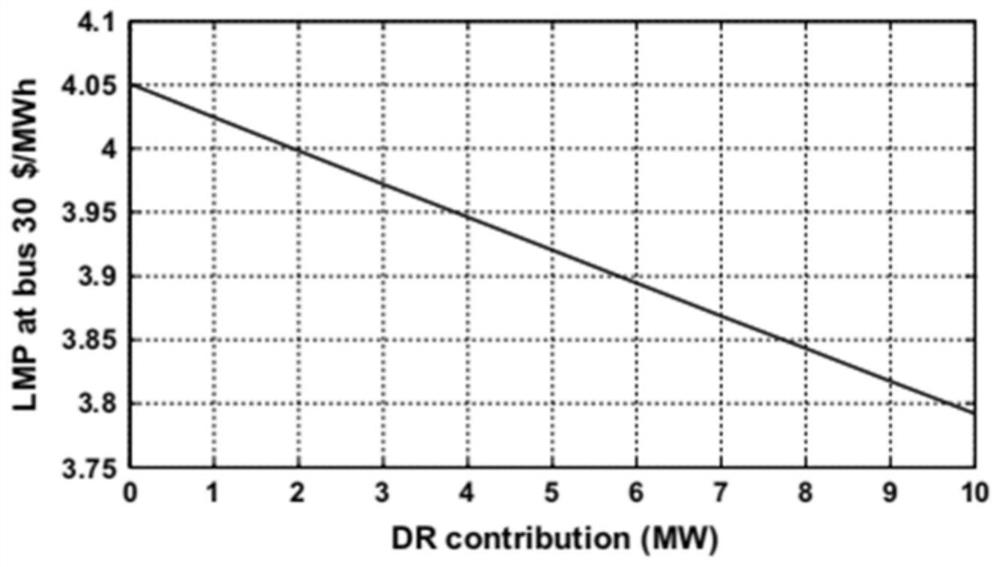Aggregator cooperation method, device and equipment based on demand response market
A demand response and demand technology, applied in the computer field, can solve problems such as large amount of calculation, inability to represent distributed renewable power generation, and inapplicability, so as to achieve the effect of supply and demand balance
- Summary
- Abstract
- Description
- Claims
- Application Information
AI Technical Summary
Problems solved by technology
Method used
Image
Examples
Embodiment 1
[0055] The following is an introduction to Embodiment 1 of the aggregator collaboration method based on the demand response market provided by this application, see figure 1 , embodiment one includes:
[0056] S11. When the total demand of the resource buyer is fixed, create an inverse demand model to obtain the relationship between demand response contribution and demand response resource price;
[0057] S12. Construct a Coumot model, the Coumot model includes an aggregator cost model and a resource provider cost model;
[0058] S13. Determine the profit model of the aggregator according to the cost model of the aggregator, solve the profit maximization problem of the aggregator in combination with the inverse demand model, and obtain the contribution of each aggregator;
[0059] S14. According to the cost model of the resource provider and the contribution of each aggregator, solve the cost minimization problem of the aggregator, and obtain the purchase cost of each aggrega...
Embodiment 2
[0074] Such as Figure 4 As shown, embodiment two specifically includes:
[0075] Step 1: Calculation of the inverse demand model.
[0076] Under the premise that the sum of demand response contribution and generator power generation is a fixed value, use the optimal power flow algorithm to find the optimal cost of each output power, and obtain the node marginal price (that is, the demand response resource price). A series of points of demand response contribution and LMP value, linear regression by least squares method to obtain an inverse demand model (this model describes the cost of providing electricity at different nodes):
[0077]
[0078] Among them, π is the price per unit of demand response resources, φ is the offset of the inverse demand model, and △L is the amount of demand response resources, indicating the rate of change of price relative to the contribution of demand response.
[0079] Step 2: Establishment of the Coumot model.
[0080] For each aggregator...
PUM
 Login to View More
Login to View More Abstract
Description
Claims
Application Information
 Login to View More
Login to View More - R&D
- Intellectual Property
- Life Sciences
- Materials
- Tech Scout
- Unparalleled Data Quality
- Higher Quality Content
- 60% Fewer Hallucinations
Browse by: Latest US Patents, China's latest patents, Technical Efficacy Thesaurus, Application Domain, Technology Topic, Popular Technical Reports.
© 2025 PatSnap. All rights reserved.Legal|Privacy policy|Modern Slavery Act Transparency Statement|Sitemap|About US| Contact US: help@patsnap.com



